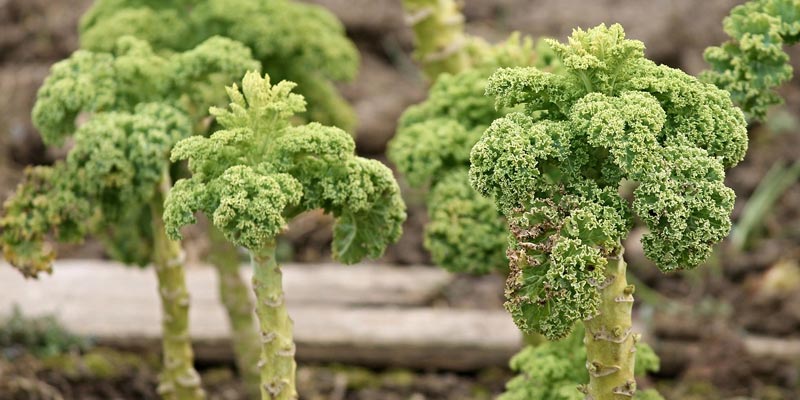In recent years, the immense popularity of Kale – a nutrient-rich leafy green – stems from its acclaimed health benefits and versatile utility in culinary arts. Knowing when to plant kale is pivotal for a successful harvest; this applies whether you boast seasoned gardening skills or simply harbor an aspiring green thumb. Our guide explores the optimal conditions and timing necessary to cultivate kale into a bountiful, thriving crop: we provide comprehensive instructions along every step of your planting journey.
Comprehending the Assortment of Kale
When you delve into the ideal planting time, consider first the type of kale you desire to grow. Kale offers a variety of options; each possesses unique characteristics: Curly Kale, Lacinato (also known as Dinosaur Kale), and Red Russian Kale are some common types, to name just a few among many more.
Some types exhibit higher tolerance to cold, potentially impacting the planting time choice through their variety selection.
Kale Planting Season
As a cool-season crop, kale flourishes in cooler temperatures and endures light frosts. To harness the advantages of these moderate weather conditions, one should consider planting kale either in early spring or late summer.
Planting In The Spring
Initiate the indoor seed-starting process six to eight weeks before your region’s anticipated final frost: employ a well-draining seedling mix; sustain temperatures within the range of 60-75°F (15-24°C).
When the seedlings reach an age of 4-6 weeks and the soil temperature hovers around 40°F (4°C), one should transplant them outdoors.
Ensure that the planting area receives full or partial sunlight; space the kale plants approximately 12-18 inches apart.
For Late Summer/Fall Planting
Initiate the process of planting kale for a fall harvest approximately 6-8 weeks prior to the anticipated occurrence of the first fall frost.
Directly sow seeds or transplant seedlings into the garden; ensure they undergo enough maturation before the onset of colder temperatures.
After exposure to light frosts, kale develops a sweeter flavor; this process enhances its desirability for fall harvest.
What Is The Typical Duration For Kale Growth?
The cool-season crop, kale thrives optimally at temperatures ranging between 50 and 70 degrees Fahrenheit; hence it allows for spring or fall planting. One can opt to directly plant Kale in their garden.
Alternatively, start indoor cultivation and then transplant the seedlings outside when conducive growth conditions prevail.
Kale matures from seed to harvest in approximately 55-75 days, a timeline contingent upon your geographical location.
In spring, summer, or fall, these are the seasons when one can plant kale. Should you intend to sow your kale seeds in autumn; ensure their placement six to eight weeks ahead of winter’s inaugural frost.
Soil and Sunlight Requirements
Ensure the soil consistently maintains a slight acidity to a neutral pH level of between 6.0 and 7.5, as this is optimal for kale’s growth. Kale thrives in well-draining soil enriched with organic matter.
Therefore, prioritize these conditions during cultivation: they are crucial for a successful yield. Consistency remains key – keep the soil evenly moist without allowing it to become waterlogged; this aligns perfectly with kale’s moisture preferences.
Moreover, sunlight is a necessity for kale. Ensure you plant it in an area exposed to at least six hours of daily sun. In warmer climates; however, consider offering the plants some respite from intense afternoon heat by providing shade.
Best Location For Growing Kale
The best location for planting kale is: where it receives full sun; in well-drained soil with a pH level between 6 and 7.5, specifically. Avoid areas that recently housed other brassica crops to reduce the risk of soil-borne diseases; furthermore, rotate your crops annually to maintain optimal growing conditions.
Planting kale thrives in full sun and cool temperature spots, although most varieties also flourish in partial shade. However, for optimum taste of the leaves grow your plants under full sunlight.
Kale Growing Success Tips
Mulch: Apply a layer of organic mulch around the base of kale plants for three primary benefits: retaining soil moisture, suppressing weeds, and regulating soil temperature. This practice is known as mulching.
Watering: Maintain a consistently moist soil; this is particularly crucial during periods of drought. To thwart fungal diseases, ensure your water at the plant’s base.
Fertilizers: Kale benefits from a balanced fertilizer during the growing season, apply either a slow-release fertilizer or compost top-dressing for optimal results; specifically fertilizing with these options will promote its vigorous growth.
Pest Management: Vigilantly monitor common pests—aphids and caterpillars in this case. Safeguard your kale using organic pest control methods; avoid the need for harsh chemicals.
Conclusion
Understanding the seasonal preferences of kale and planting it at precisely the right time is crucial for a successful, abundant harvest. Be it spring seed sowing or fall crop preparation; ensuring your kale plants thrive under optimal conditions is key to providing an uninterrupted supply of deliciously healthy greens for your table.



